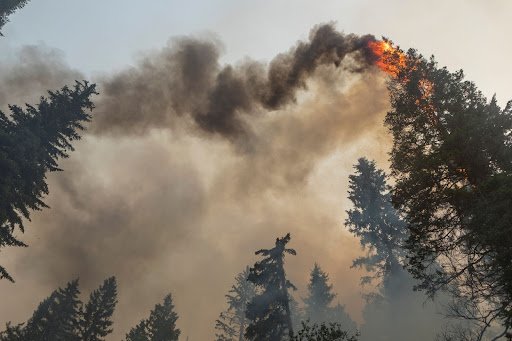The Uneven Public Health Impacts of Wildfire Smoke


Communities of color live in areas more prone to wildfire and are disproportionately impacted by wildfire smoke. Children, the elderly, and those with pre-existing conditions are also more susceptible to adverse health impacts of wildfire smoke.
Written by: Dr. Benis Egoh, Assistant Professor at the University of California, Irvine and Blue Forest Science Advisor
Adapted from Blue Forest’s 2021 Impact Report
As wildfires increase in frequency and severity, population exposure to wildfire smoke grows in turn. Inhalation of particulate matter (PM) 2.5 microns or smaller is the main driver of adverse health impacts from wildfire smoke exposure. Exposure to wildfire smoke has been linked to excess deaths and illnesses from cardiovascular, cerebrovascular, and respiratory complications, as well as mental health impacts, decreased birth weights, and increased susceptibility and lethality of COVID-19 infection. These impacts are not felt evenly.
The risk of and resiliency to wildfire events vary with social vulnerability, with a particular burden on those who lack health insurance, work outside, or experience homelessness.
Communities of color live in areas more prone to wildfire and are disproportionately impacted by wildfire smoke. Children, the elderly, and those with pre-existing conditions are also more susceptible to adverse health impacts of wildfire smoke. By the same token, strategies to mitigate the health impacts of wildfire smoke exposure are not distributed equitably, and planning should be fine-tuned to the needs of the diverse communities impacted by wildfire. The most powerful way to reduce population exposure to wildfire smoke is to start at the source, by restoring overgrown forests and reducing wildfire risk. Forest restoration provides many other benefits as well, including increased recreational activities, carbon sequestration, and improved water quality.
Through innovative financing and collaboration with public and private entities, Blue Forest implements forest restoration projects at an accelerated pace and scale. Check out this story map about our new Forest Resilience Bond, Yuba II.